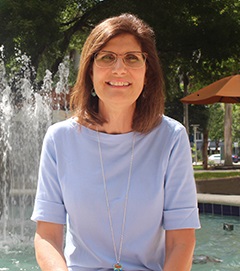More Young Women are Getting Skin Cancer – Why?

For years public service campaigns have warned us about the dangers of sun exposure, but recent research from the American Academy of Dermatology has found that the rates of skin cancer, including the most lethal form, have skyrocketed and that women in particular are developing these cancers at an earlier age.
A report from the AAD revealed that, between 1970 and 2009, the rates of melanoma jumped by almost 800 percent among women 18- to 39-years old. The rates of basal cell carcinoma increased by 145 percent and squamous cell carcinoma by more than 260 percent.
“It’s pretty dramatic and it’s alarming,” says Dr. Keyvan Nouri, director of Mohs and dermatologic surgery at Sylvester Comprehensive Cancer Center. And while the report shines a bright light on younger women, “there’s been an increase across the board, for different ages and both sexes.”
Focusing on the startling statistic for melanoma tells just part of the story, Dr. Nouri says. More than 50 percent of all cancers are skin cancer. In fact, one and five Americans will develop some kind of skin cancer by age 70.
Melanoma gets lots of attention for good reason, however.
Though it accounts for only about 1% of all cases, melanoma happens to be the deadliest skin cancer. In the United States alone, according to statistics cited by the Aim at Melanoma Foundation, the percentage of people of all ages who develop melanoma has more than doubled in the past 30 years. Healthcare professionals estimate that there will be 96,480 new cases of melanoma and 7,230 deaths from the disease in the U.S. this year.
And it’s not just young women affected.
Melanoma is actually more common in men than in women — but that’s true of most skin cancers. Another study, recently published online in the journal JAMA Otolaryngology-Head & Neck Surgery, found that the number of melanoma cases on the head and neck of young people jumped more than 51 percent between 1995 and 2014 — and of those 55% were boys and men up to 39 years old. Researchers speculated that young men are getting more skin cancer in those body areas because these are exposed to the sun. In contrast, melanoma in other parts of the body is more common in females than males.
“Historically men tend to be outdoors more and have jobs where they’re working outside,” Dr. Nouri says. “But I think that women are getting sun exposure now in different ways, too.”
Basal and squamous cell carcinoma are more frequently seen by dermatologists. They tend to show up later in life because many years can pass between UV exposure and the appearance of cancerous lesions. But Dr. Nouri and other dermatologists say they’re now seeing cases in younger sun-worshipping patients.
“All you have to do is go to Miami Beach and people are lying in the sand right under the bright sun,” Dr. Nouri says. “I think they don’t believe it’s going to happen to them.”
About 4 million new cases of basal cell carcinoma, the most common form of skin cancer, are diagnosed every year in the U.S.
When caught early, it’s the most curable. Squamous cell skin cancer, the second most common form of skin cancer, is also curable when caught early.
But while both these types of skin cancer can be successfully treated, the lesions can be not only disfiguring, they can also invade the deeper layers of skin and spread to the rest of the body. About 15,000 Americans die from squamous cell carcinoma each year. BCC, on the other hand, rarely spreads but it can turn dangerous by growing locally, destroying skin, tissue and bone.
What’s frustrating to dermatologists?
These skin cancers can be preventable if people made a few lifestyle changes. The AAD report, for example, pointed the finger at tanning beds, which emit extremely intense ultraviolet rays. Tanning bed use causes as many as 400,000 cases of skin cancer in the United States each year.
Fewer people are visiting tanning bed salons. However, about 7.8 million women still use them and just one session can hike the risk of developing squamous cell carcinoma by about 67%, basal cell carcinoma by about 29%, and melanoma by 20%. Tanning beds may not be as popular in South Florida, but year-round warm, sunny weather puts us at a higher risk of getting too much of those dangerous UV rays.
Here’s what Dr. Nouri suggests:
- Don’t use tanning beds. And don’t try to tan the “natural” way either. Be happy with the skin you have.
- Use a broad-spectrum, water-resistant sunscreen with an SPF of 30 or higher every day. Make sure to reapply as needed, and according to manufacturers’ directions.
- Wear sun-protective clothing, including pants, long sleeved shirts, hat and sunglasses. There are also fashion lines that use fabrics that block the sun’s rays. Clothing items will list their Ultraviolet Protection Factor (UPF), which shows how much UV radiation a fabric allows to reach your skin. The Skin Cancer Foundation provides Seals of Recommendation to fabrics that have at least a UPF of 30. A UPF of 50 or more is considered excellent.
- Avoid being outside between 10 a.m. and 4 p.m. If you don’t have a choice, seek the shade.
- Provide extra sun-protection for children at all times and instill sun-safety habits early on.
“It’s important to let people know that avoiding the sun and the damage it can have on skin is not just about cancer,” Dr. Nouri says. “By limiting exposure you’re also keeping your skin more youthful looking — and who doesn’t want that?”

Ana Veciana-Suarez, Guest Columnist
Ana is a regular contributor to the University of Miami Health System. She is a renowned journalist and author, who has worked at The Miami Herald, The Miami News, and The Palm Beach Post. Visit her website at anavecianasuarez.com or follow @AnaVeciana on Twitter.
Tags: dermatology, Dr. Keyvan Nouri, melanoma, skin cancer, sun exposure
